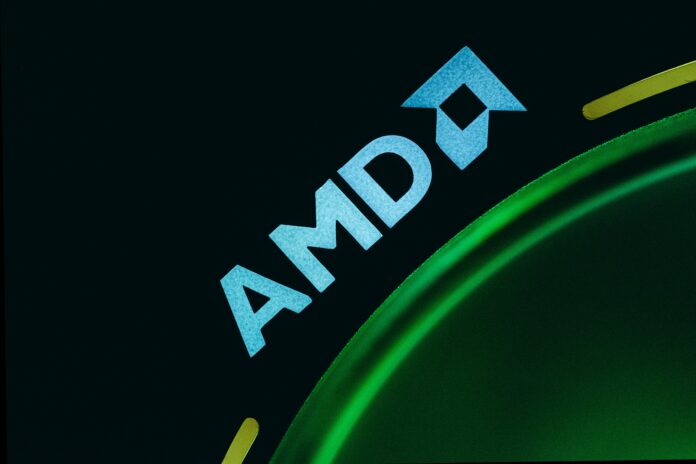Advanced Micro Devices (AMD) is a prominent semiconductor company that has made significant contributions to the technology industry. With a rich history spanning several decades, AMD has emerged as a major competitor in the global market, specializing in the design and development of microprocessors, graphics processing units (GPUs), and other related technologies. In this comprehensive description of AMD, we will delve into the company’s origins, key products, technological innovations, market presence, and future prospects.
AMD, an acronym for Advanced Micro Devices, was established in 1969 and has since become a well-known name in the world of semiconductors. The company’s headquarters are located in Santa Clara, California, and it operates globally, serving a diverse range of customers, including original equipment manufacturers (OEMs), distributors, and end-users. AMD’s primary focus revolves around the design and manufacturing of high-performance computing solutions, catering to various sectors such as gaming, data centers, personal computers, and professional visualization.
One of the standout features of AMD is its dedication to research and development, which has allowed the company to deliver innovative and cutting-edge products. AMD’s flagship products include microprocessors, which are the brain of computers, and graphics processing units (GPUs), responsible for rendering high-quality graphics in video games, movies, and other visually demanding applications. These products have propelled AMD to the forefront of the technology industry, garnering a loyal customer base and critical acclaim.
AMD’s microprocessors, commonly known as CPUs (Central Processing Units), have witnessed remarkable advancements over the years. The company’s CPU lineup comprises several series, including the Ryzen and EPYC processors. These CPUs are designed to deliver exceptional performance, energy efficiency, and advanced security features. The Ryzen processors, aimed at personal computers and workstations, have gained popularity among both gaming enthusiasts and professionals seeking high-speed computing capabilities. On the other hand, EPYC processors target the data center market, providing robust performance, scalability, and reliability for enterprise-level computing tasks.
In addition to its CPU prowess, AMD has gained recognition for its graphics processing units, which play a vital role in powering visually immersive experiences. AMD’s GPU series, known as Radeon, offers a range of options suitable for gaming, content creation, and professional applications. The Radeon GPUs leverage advanced technologies, such as AMD’s RDNA architecture, which enhances gaming performance, power efficiency, and visual fidelity. Moreover, AMD’s GPUs are often favored by cryptocurrency miners due to their computational prowess.
One notable achievement that has propelled AMD’s GPUs into the limelight is their integration into gaming consoles. Both the Sony PlayStation and Microsoft Xbox consoles have opted for AMD’s custom-designed APUs (Accelerated Processing Units), which combine CPU and GPU capabilities into a single chip. This strategic partnership with leading console manufacturers has significantly bolstered AMD’s market presence and solidified its reputation as a provider of high-performance graphics solutions.
Apart from CPUs and GPUs, AMD has made noteworthy strides in other areas as well. The company has invested in the development of innovative technologies like heterogeneous computing, artificial intelligence, and machine learning. AMD’s dedication to advancing these domains is evident through its products like the ROCm software platform, which enables developers to harness the power of heterogeneous computing for accelerated workloads and deep learning applications.
In recent years, AMD has gained substantial market share in the semiconductor industry, posing a formidable challenge to its primary competitor, Intel. This surge in popularity can be attributed to several factors, including AMD’s focus on delivering competitive performance at affordable prices, as well as its commitment to backward compatibility, which allows users to upgrade their systems without replacing the entire infrastructure. Additionally, AMD’s collaboration with other industry leaders, such as partnerships with major cloud service providers, has further enhanced its market position and opened doors to new opportunities.
Looking ahead, AMD shows no signs of slowing down. The company continues to invest in research and development, striving to push the boundaries of technology. AMD’s roadmap includes the introduction of new processor architectures, advancements in graphics technologies, and the exploration of emerging fields like quantum computing. As the demand for high-performance computing continues to rise across various sectors, AMD is well-positioned to capitalize on these opportunities and further solidify its position as a key player in the semiconductor industry.
One of the primary factors driving AMD’s success is its focus on delivering competitive performance at affordable prices. In recent years, AMD has gained a reputation for providing high-performance processors and graphics cards that offer excellent value for money. This strategy has resonated with consumers, particularly gamers and PC enthusiasts, who seek powerful hardware without breaking the bank. By offering a compelling price-to-performance ratio, AMD has successfully attracted a wide range of customers, expanding its market share and challenging the dominance of its competitors.
Another crucial aspect of AMD’s strategy is its commitment to backward compatibility. Unlike some of its competitors, AMD has consistently emphasized the importance of ensuring that its new products are compatible with existing hardware and infrastructure. This approach provides users with the flexibility to upgrade their systems gradually, without the need for a complete overhaul. By prioritizing backward compatibility, AMD has fostered trust and loyalty among its customer base, encouraging long-term relationships and repeat purchases.
Furthermore, AMD’s collaboration with industry leaders and strategic partnerships has played a significant role in its growth and market penetration. The company has forged alliances with major players in various sectors, including cloud service providers, game developers, and technology companies. These partnerships have enabled AMD to leverage its technology and solutions across different platforms and industries, expanding its reach and opening doors to new opportunities. By aligning itself with key industry stakeholders, AMD has positioned itself as a trusted and reliable partner in delivering high-performance computing solutions.
In addition to its success in traditional computing markets, AMD has also made notable strides in emerging fields such as artificial intelligence (AI) and machine learning (ML). The company has invested in developing technologies that accelerate AI and ML workloads, catering to the increasing demand for computational power in these domains. AMD’s GPUs, with their parallel processing capabilities and advanced software support, have become popular choices for AI and ML applications, enabling researchers and data scientists to tackle complex problems and drive innovation in these fields.
Moreover, AMD’s commitment to energy efficiency and sustainability has garnered attention and accolades. The company has actively pursued strategies to reduce power consumption in its products, contributing to a greener and more sustainable future. This focus on energy efficiency aligns with the growing global awareness of environmental concerns and positions AMD as a responsible and forward-thinking player in the industry.
Looking ahead, AMD’s future prospects remain promising. The semiconductor market continues to evolve rapidly, driven by emerging technologies and evolving consumer demands. AMD’s ongoing investments in research and development, coupled with its strong product portfolio and market presence, position the company to capitalize on these trends. With advancements in areas such as processor architectures, graphics technologies, and emerging fields like quantum computing, AMD is poised to push the boundaries of what is possible in the world of computing and shape the future of technology.
In conclusion, Advanced Micro Devices (AMD) has emerged as a significant player in the semiconductor industry through its commitment to innovation, competitive pricing, backward compatibility, strategic partnerships, and sustainability. The company’s success in delivering high-performance computing solutions, particularly in the areas of microprocessors and graphics processing units, has propelled it to challenge the dominance of its competitors. With a focus on emerging technologies, energy efficiency, and collaboration with industry leaders, AMD is well-positioned for continued growth and to shape the future of computing.














